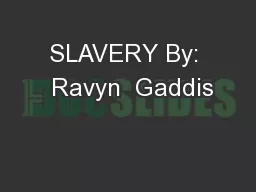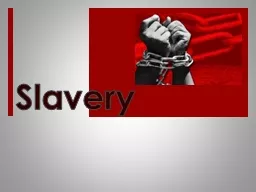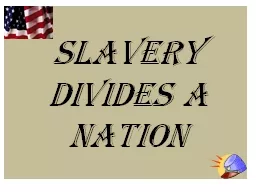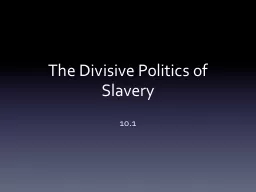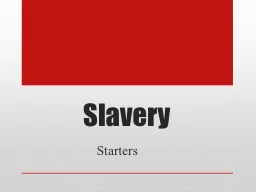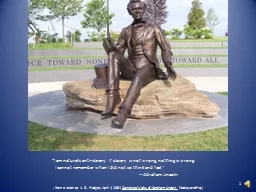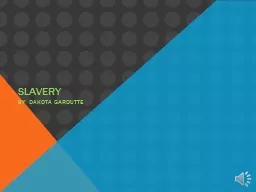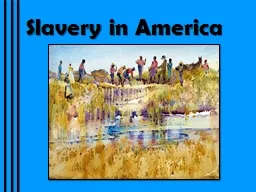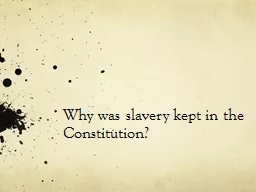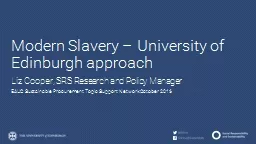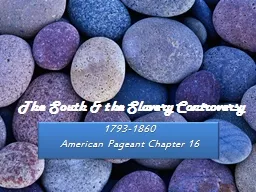PPT-SLAVERY By: Ravyn Gaddis
Author : cheryl-pisano | Published Date : 2018-03-10
Period 3 121314 SLAVERY IN THE SOUTHCOTTON If you put a chain around the neck of a slave the other end fastens itself around your own Ralph Waldo Emerson 1841
Presentation Embed Code
Download Presentation
Download Presentation The PPT/PDF document "SLAVERY By: Ravyn Gaddis" is the property of its rightful owner. Permission is granted to download and print the materials on this website for personal, non-commercial use only, and to display it on your personal computer provided you do not modify the materials and that you retain all copyright notices contained in the materials. By downloading content from our website, you accept the terms of this agreement.
SLAVERY By: Ravyn Gaddis: Transcript
Download Rules Of Document
"SLAVERY By: Ravyn Gaddis"The content belongs to its owner. You may download and print it for personal use, without modification, and keep all copyright notices. By downloading, you agree to these terms.
Related Documents

